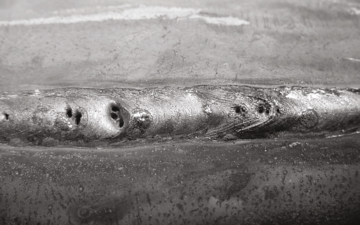Discover What is Porosity in Welding and Its Effect on Structural Honesty
Discover What is Porosity in Welding and Its Effect on Structural Honesty
Blog Article
Unraveling the Enigma of Porosity in Welding: Tips for Decreasing Flaws and Making The Most Of Quality
In the complex globe of welding, porosity remains a persistent obstacle that can dramatically impact the quality and integrity of welded joints. Understanding the factors that add to porosity development is essential in the pursuit of remarkable welds. By untangling the mystery of porosity and implementing efficient strategies for issue minimization, welders can boost the criteria of their job to attain exceptional quality results. As we dive right into the midsts of porosity in welding, discovering the tricks to its prevention and control will be paramount for specialists seeking to understand the art of high-grade weldments.
Understanding Porosity in Welding
Porosity in welding, a common issue encountered by welders, refers to the visibility of gas pockets or gaps in the bonded product, which can compromise the honesty and high quality of the weld. These gas pockets are generally trapped throughout the welding procedure because of various factors such as improper securing gas, infected base materials, or incorrect welding criteria. The development of porosity can compromise the weld, making it at risk to splitting and corrosion, eventually resulting in architectural failings.
By recognizing the significance of maintaining appropriate gas shielding, guaranteeing the cleanliness of base materials, and optimizing welding settings, welders can dramatically lower the chance of porosity development. In general, an extensive understanding of porosity in welding is important for welders to create top quality and durable welds.

Typical Causes of Porosity
When inspecting welding processes for possible top quality problems, comprehending the typical root causes of porosity is crucial for preserving weld honesty and protecting against structural failures. Porosity, defined by the existence of cavities or voids in the weld steel, can substantially compromise the mechanical properties of a welded joint. One typical root cause of porosity is inappropriate securing gas coverage. Inadequate securing gas flow rates or improper gas combinations can result in atmospheric contamination, leading to porosity development.
In addition, welding at incorrect criteria, such as exceedingly high traveling speeds or currents, can create too much turbulence in the weld swimming pool, capturing gases and creating porosity. By dealing with these common causes with appropriate gas securing, material preparation, and adherence to optimum welding specifications, welders can minimize porosity and boost the top quality of their welds.
Techniques for Porosity Avoidance
Implementing effective safety nets is essential in minimizing the incident of porosity in welding procedures. One strategy for porosity prevention is guaranteeing appropriate cleansing of the base metal prior to welding. Pollutants such as oil, grease, rust, and paint can cause porosity, so thorough cleaning using proper solvents find out here now or mechanical techniques is necessary.

Making use of premium filler materials and protecting gases that are appropriate for the base steel and welding procedure can significantly reduce the threat of porosity. Additionally, preserving correct welding parameters, such as voltage, existing, travel rate, and gas circulation price, is vital for porosity prevention.
Furthermore, using appropriate welding techniques, such as maintaining a consistent traveling rate, electrode angle, and arc length, can help stop porosity (What is Porosity). Appropriate training of welders to guarantee they comply with ideal practices and high quality control treatments is likewise necessary in decreasing porosity defects in welding

Best Practices for Top Quality Welds
One secret technique is maintaining correct cleanliness in the welding area. Thoroughly cleaning up the work surface and bordering location before welding can assist reduce these problems.
One more finest method is to thoroughly select the ideal welding parameters for the details products being signed up with. Correct parameter option guarantees ideal weld penetration, combination, and total top quality. Utilizing high-grade welding consumables, such as electrodes and filler steels, try this website can substantially impact the last weld quality.
Significance of Porosity Control
Porosity control plays a vital duty in making certain the stability and high quality of welding joints. Porosity, defined by the existence of cavities or gaps within the weld steel, can substantially endanger the mechanical properties and structural stability of the weld. Excessive porosity damages the weld, making it extra at risk to splitting, deterioration, and overall failing under functional loads.
Reliable porosity control is necessary for keeping the preferred mechanical residential properties, such as stamina, ductility, and toughness, of the bonded joint. What is Porosity. By decreasing porosity, welders can improve the overall top quality and reliability of the weld, making sure that it meets the efficiency demands of the intended application
Additionally, porosity control is crucial for achieving the preferred aesthetic appearance of the weld. Too much porosity not only weakens the weld yet likewise interferes with its aesthetic allure, which can be important in industries where appearances are essential. Correct porosity control strategies, such go to this site as utilizing the proper protecting gas, regulating the welding specifications, and ensuring proper cleanliness of the base products, are vital for generating top quality welds with very little problems.

Final Thought
In final thought, porosity in welding is a typical issue that can compromise the top quality of the weld. It is vital to manage porosity in welding to ensure the honesty and stamina of the last product.
Report this page